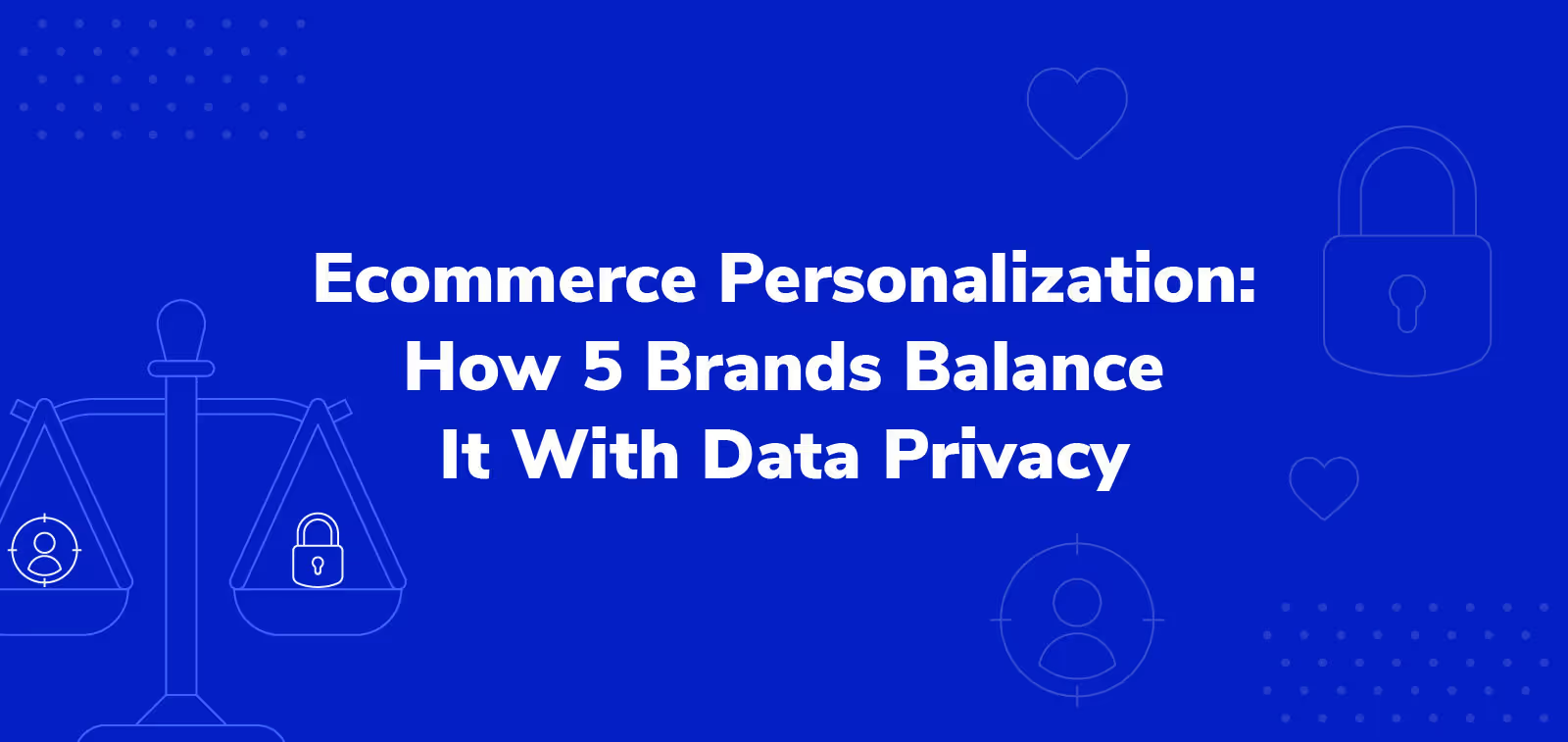3 Challenges Fitness Ecommerce Merchants Face (And How to Overcome Them)

Fitness ecommerce companies are fighting hard for market share in their industry, which is growing fast.
The fitness goods market has enjoyed incredible growth over the last decade and is expected to have grown by $15.9 billion from 2019 to the end of 2022. There’s also been a big increase in unique fitness products on the market. In 2020, 72,000 net new SKUs landed, with a 58% year-on-year average increase extending back to 2017.
In the battle over this market, fitness retailers face unique challenges with the ecommerce business model. If you’re feeling overwhelmed, don’t worry. Savvy ecommerce merchants can secure their slice of the fitness goods market through helpful customer content, community building, and robust product protection plans.
1. Fitness ecommerce shoppers can’t try equipment in person
Fitness equipment can feel like a big financial commitment for shoppers, so it’s understandable that many may want to try out the product in person to reassure themselves that they’re making the right choice. Ecommerce leaders may worry that if consumers prefer a hands-on pre-sale demo experience, brick-and-mortar merchants might have an edge.
But since the start of the pandemic, McKinsey reports that the number of consumers expecting to make fitness purchases online has grown by 11%, and 75% of consumers have tried out a new buying behavior. Most say they’ll continue to do so.
With buying habits shifting, fitness ecommerce merchants enjoy a fresh chance to attract shoppers and help them feel comfortable buying remotely.
Create videos that show products in action
One approach to reassuring potential fitness ecommerce customers is to upload high-quality product videos. Digital Commerce 360 found that the AOV (average order value) of the 420 Top 1,000 merchants using video was $160. For those not using video, AOV drops to just $138. That’s a 16% difference.
In the world of retail, where margins can be small, advantages like that can make or break a business.
To make the most of video, display your own prominently on your product page or on your main home page. MYXfitness has done a tremendous job using video to show how their fitness system works in different ways.

The video shows customers the different exercise routines and combinations available to them through MYXfitness, educating them on the full value of the system.
This visualization is helpful, since MYXfitness offer a combination of products that can be used in a multitude of ways. By watching the video, shoppers can visualize the kinds of activities that can form part of their MYXfitness lifestyle.
Pro tip: These kinds of videos are great for building your social media presence, too!
Provide detailed buyer guides
Fitness ecommerce shoppers may not be able to try your products out in person, but you can still give them the details they need with a buyer’s guide. This resource will help them confirm whether the product is the right fit for them, so they feel confident in the purchase.
Buyer guides explain how different product alternatives, such as treadmills or exercise bikes, meet different needs and how to decide between them. Ecommerce brands often present them as downloadable PDFs or microsites.
Online buyer guides take advantage of the variety of media that can be used in the ecommerce sales process. After all, customers with a screen can digest detailed product information in different ways. As a result, they can make a decision driven by clear insights gained from their preferred form of media (video, AR, VR, text, images, etc.), leading to fewer returned items.
To get started, list the different product choices available and assign them categories based on function and intended customer. Recording this information in a simple spreadsheet gives all the information a writer could need in preparing a buyer guide. After that, it’s a simple matter of handing them the spreadsheet and explaining what you’re hoping to craft.
If you’d like to prepare one yourself, there are guides available with detailed instructions.
Educating a customer about your fitness equipment reduces confusion and overwhelm. With clear and insightful information in hand, hesitant customers gain the confidence to make a purchase.
2. Mass-retail prices pull customers away from boutique online fitness merchants
Customers want quality, but they also want a good deal. But with edited photos and unreliable product reviews, it can be hard to tell which items are actually worthwhile. Low-quality products might appear just as good as high-quality products but at a more attractive price point.
Visually similar but more expensive items can be a tough sell, even if they are better quality in reality. But don’t despair. There are ways to compete by building trust and confidence in the value of quality fitness goods.
Build community through online engagement and events

Ecommerce giants are often loaded with misleading product descriptions and a mountain of positive ‘reviews.’ But the low-end products often found on these big online marketplaces rarely become the center of a passionate following. All the 5-star reviews in the world can’t compete with a genuine community.
To gain an edge, leverage social media differently than your competitors. Rather than talking about your own company, lift up the voices of customers with positive stories that involve your products to share and celebrate their successes.
Whether it’s tweeting happy testimonials or posting Instagram videos of excited users celebrating their achievements, place the customer at the forefront of your messaging. Featured customers are more likely to become advocates who will spread the word, engaging with your official accounts and each other.
To create focal points for social media advocates to engage with and inspire customers to sign on, host streamed events on social, like trial fitness instruction sessions or live spectacles.
Peloton has made social media engagement into an art form.

Peloton has succeeded in creating an engaged online community with the following tactics that you might also consider using:
- Give your community a voice in product development – implement suggestions from users you find online. The ‘Tags’ feature Peloton introduced that lets users connect with people they met off-bike came about in just this way.
- Humanize your company – feature charismatic employees that represent the values you hold. Peloton does this superbly by empowering its training instructors with employee advocacy tools such as Sprout.
- Lean into positivity – the fitness industry is a place people go to for self-improvement. It shouldn’t be a place for feeding guilty consciences with unnecessary criticism or shaming. Be like the bike; take the high road!
Offer connected fitness products
Connected fitness is the breakout exercise trend of the pandemic. The term refers to products that give consumers access to remote fitness classes with qualified instructors, competitive leaderboards, or other digital features.
These products are ideal for people who struggle with motivation when working out at home. Customers may not feel like sweating if they’re exercising alone. But for many people, exercising becomes a lot more enjoyable when doing it with others — especially during the pandemic when we’re all more isolated. On the other hand, a disconnected piece of equipment from a giant retailer doesn’t offer any of these advantages to the consumer.
As an added bonus, connected fitness also empowers online merchants to sell subscriptions and earn additional recurring revenue. For example, you might sell a subscription package for X training sessions per month.
3. Adding adequate product protection can feel impossible
Fitness equipment can take a pounding. But when user enthusiasm begins to take its toll, product protection can help extend customers’ product satisfaction.
However, major fitness retailers often offer legacy product protection plans with limited coverage. You may have tried to file an extended warranty claim and come up against nit-picking because the type of fault or damage isn’t covered by the extended warranty. This isn’t unusual with legacy product protection.
To make matters worse, these legacy plans often don’t last long enough. If you’re spending hundreds of dollars on fitness equipment that should last years, an extended warranty should cover a reasonable period of use.
When established stores’ plans aren’t comprehensive, it’s easy for weak product protection to feel like the norm — both as a merchant and as a consumer. But what if filing a claim wasn’t a source of frustration, anxiety, and anger but of surprise, relief, and gratitude? That’s exactly why technology-driven product protection — such as Extend’s — was created.
Extend’s streamlined interface and approachability add to a quality experience. Customers can file online with a simple message to a virtual claims specialist. They also have the option of calling a customer support representative if they prefer. With Extend, claims can often be processed in 90 seconds or less.
Give customers the peace of mind to invest in your product by offering customizable coverage.
Crush your fitness ecommerce challenges with Extend in your corner

As a fitness ecommerce merchant, there’s no single path to competing with major online retailers with low prices on one hand and physical stores with in-person demos on the other. Customers want good deals, and they want to feel confident in their purchase before making a big investment in fitness equipment.
Stand out to consumers by prioritizing quality and customer service. Along with following the tips in this guide, regularly talk to your customers. Figure out what their latest expectations are in these conversations, and adjust your product experience as needed to keep your fitness ecommerce customers happy.
When you’re ready to add an additional revenue stream while delighting customers, you can book a demo with Extend to get started.
Angela Marrujo is a content creator at Extend.
.svg)













































.avif)










